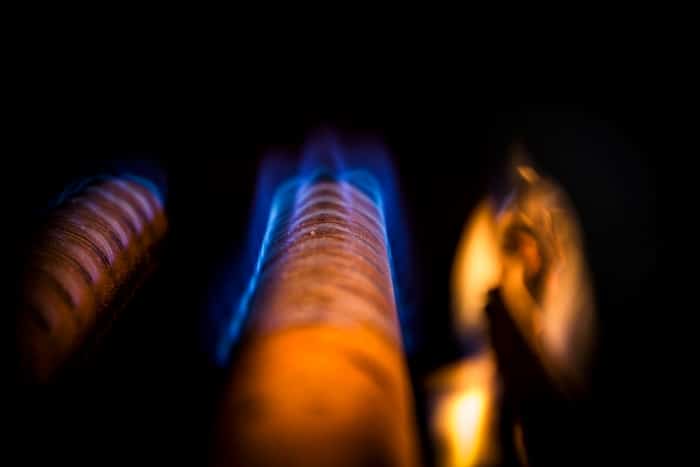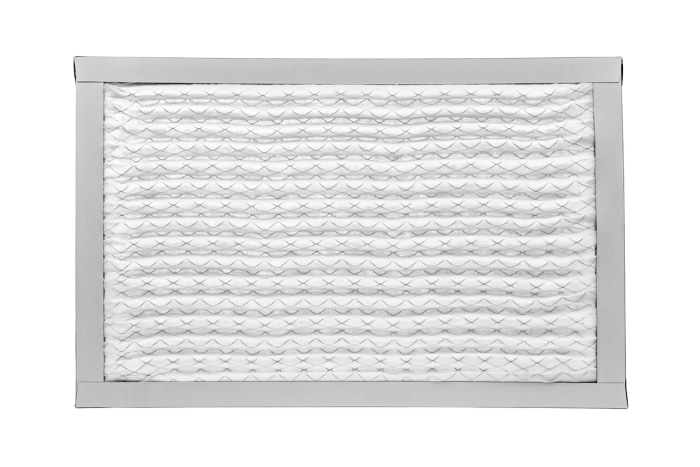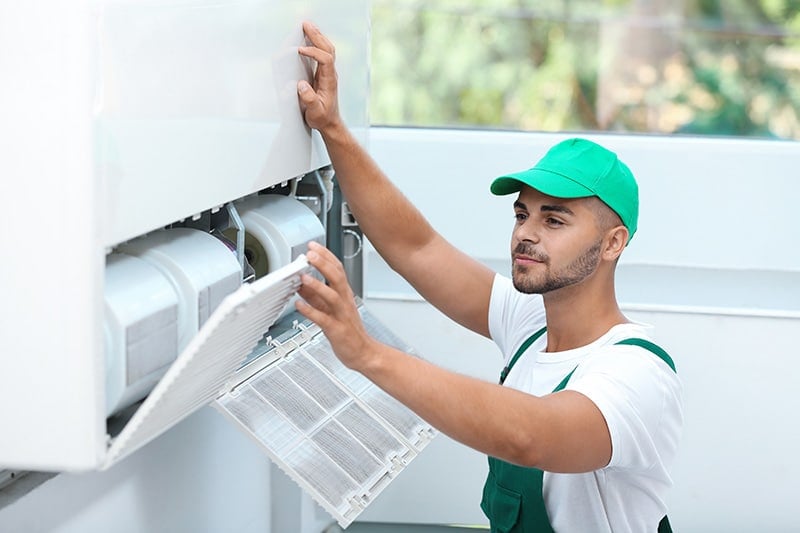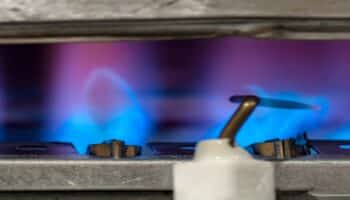Is your furnace being louder than a kindergartner throwing a tantrum?
You’re not alone! Furnaces are great for helping us stay warm and cozy in our homes, but you wouldn’t believe how many homeowners have trouble with them consistently worldwide.
I know how annoying it can be to have your furnace make random noises and disturb the peace in your home – especially when all you want is to relax. But don’t worry; you’ve come to the right place for answers. Below, you’ll find a list including 7 common reasons why your furnace is noisy, as well as simple ways to address them.
When you have a noisy furnace, it can be due to an issue with the ignition system, expansion and contraction of the vents, a dirty air filter, a bad blower wheel motor, and more.
Read on to quiet your noisy furnace!
There Are Different Types of Furnace Noise
You might find it hard to believe, but different types of furnace noises can indicate different types of issues. In order to fully understand what’s going on with your appliance, it’s important to identify what the noise is.
Here are the most common furnace noise types, their meaning, and the simplest ways to address them and get everything back to normal.
#1 Clicking
Clicking is one of the most common furnace noise types, and you’ll be glad to learn that, in several cases, it’s completely normal. In fact, determining whether the clicking should be cause for concern is as easy as observing how the furnace works.
Typically, a furnace will click as it ignites and during the first couple of minutes of operation. In such cases, the clicking is nothing to be worried about; however, if the clicking persists after a few minutes, I’ve found the most likely explanation is a fault with the ignition system.

A faulty ignition system can be very dangerous because even when the fault is partial, too much gas can escape the furnace before the flame is lit. It’s very important that you address the issue as soon as you suspect something’s wrong.
Solution: My usual advice when dealing with a bad furnace ignition system is to call a professional and have them take a closer look. Since the situation involves a key part of the furnace that can be the difference between proper gas combustion and a disaster, it’s best not to DIY here.
#2 Banging/Popping
Another very common sound that can originate from a noisy furnace is banging popping – typically during the first few minutes after ignition and the first few after the fire goes off.
Metal, like other materials, expands and contracts with heat, which means that your furnace’s vents can make popping/banging noises as the heat rises and when the temperature cools down. In my experience, in 99% of cases, the banging and popping sounds making a furnace noisy are completely normal and no cause for concern.
To be sure, check that the noises only happen during the first few minutes of operation and for a little while after the furnace has started cooling down.
#3 Whistling
Furnaces, like any other appliance, need constant cleaning to work normally. If you don’t clean your furnace often and replace the air filters when needed, you’ll likely hear a whistling sound coming from it eventually, making it very noisy.
Many people are left confused and worried when they hear a whistling sound coming from their furnace – after all, they’d expect whistling from a kettle, not a heating appliance!
The main reason behind a whistling furnace is a dirty air filter. Furnace air filters are in place to prevent foreign objects, including dust, debris, and even bugs, from entering the appliance and to keep them from being blown into your home’s ducts.

Over time, the filters can get excessively dirty, blocking a significant part of the airflow needed to ensure proper combustion and heating.
Solution: My usual advice when your furnace is being noisy and making a whistling sound is to carefully remove the filters and check them. Depending on your furnace’s brand and model, you’ll either have to replace the filters or clean them thoroughly and reinstall them if they’re reusable.
Although the process can vary from model to model, the broad strokes remain the same in many cases, so here are some simple steps you can follow:
- Turn off the furnace and cut power to the appliance from your circuit breakers.
- Locate the air filter. Depending on your appliance’s model, the filter will either be in the return plenum next to the furnace itself or behind one of the air returns in your home. To know the exact location of the filter, please refer to your User Manual.
- Once you’ve located the air filter, carefully remove it. Most furnaces will use non-reusable air filters, so please measure the old filter and go to the hardware store to get a new one.
You’ll need to learn different filter ratings and then consider to determine which is best for you. Higher-rated filters will filter out more unwanted particles, including small bugs, dust, pet dander, etc.; however, they will also reduce the amount of airflow into the furnace.
On the other hand, lower-rated filters will let more air in but also more foreign objects. If you or someone in your home have allergies or several pets, you’ll likely be better off with a higher-rated filter.
Most furnace air filters aren’t meant to be left without replacing for longer than 90 days; however, if you need the best filtering quality possible, my usual advice is to replace the filters once per month or sooner if necessary.
#4 Squealing
Squealing is also a very common sound that can make a furnace noisy and indicate a larger, more complex issue you’ll have to address as soon as possible.
Typically, a squealing furnace means that the bearings in the blower wheel’s motor are dry and need lubrication. The best way to stop the squealing is to turn off the power and gas supply to the furnace, check your User Manual for specific instructions on accessing the blower wheel’s bearings, and apply a lubricating substance.
If you don’t have the manual handy, please refer to our free resource below to find it.
You can buy the proper lubricant at a hardware store, and it shouldn’t be too expensive.
Provided the squealing doesn’t stop after lubricating the furnace’s blower wheel’s bearings, there’s a good chance that the blower wheel motor is actually faulty and will need replacing.
Solution: As with a bad ignition system, I don’t recommend you try to address a faulty blower wheel yourself, as the process can be very complex, and you could end up doing more damage to the appliance if you don’t know what you’re doing.
In my experience, depending on your furnace’s size and model, the blower wheel motor replacement can range between $70-$1,000 plus the rate of the technician that you call in to do the job.
#5 Rattling
Rattling is also a very common sound when dealing with a noisy furnace; luckily, like the popping and banging noises, it’s nothing to worry about in most cases.
Usually, a rattling noise coming from a furnace indicates a loose screw that’s allowing a panel somewhere to wobble around and move erratically with airflow. Over time, furnaces can wear down, and screws around it can loosen up, causing several issues and noises, such as this one.
Luckily, addressing the situation is very easy. All you have to do is locate the source of the rattling, check if there’s a loose panel or vent screw, and tighten it again to get everything back to normal!
#6 Scrapping
The next possible sound you might hear when trying to quiet a noisy furnace is something similar to scrapping. Normally, the scrapping sound will be that of one metal object rubbing against another in a repeated fashion.
In many cases, the scrapping is the result of the blower wheel fan hitting the edges of the furnace and/or vents. Under normal circumstances, the scrapping shouldn’t happen; however, if there are loose screws or something’s broken on the fan, it can move out of place and pound constantly against the surrounding area.
Solution: The simplest way to address the issue is to gain clear access to the blower wheel fan, check for loose screws, and tighten anything necessary – make sure the appliance is turned off and power has been cut from your circuit breakers. You don’t want to work on a fan that can activate at any point by accident!
I also recommend you look for any signs of damage on the fan that can indicate it needs replacement. If you notice anything, my usual advice is to buy a new blower wheel fan and motor and install it on your furnace. Again, with more complex repairs such as this one, I don’t recommend you DIY. Please contact a certified HVAC technician to handle the repair and installation.
#7 Loud Humming/Buzzing
The last possible sound that’s making your furnace too noisy is loud humming/buzzing. I left the humming and buzzing for last because, in my opinion, it indicates one of the most complex and expensive potential repairs on the list.
A loud humming or buzzing coming from your furnace typically means the fan’s motor is dying and will start to fail soon. Furnace blower wheel fan motors can wear out and stop working for many reasons, including improper use, overstraining, factory defects, and more.
Solution: When the blower wheel fan motor fails, you’ll need to look at your furnace’s model and brand to find the right replacement part. There are several online resources, such as AppliancePartsPros.com, that can make the search much simpler.
Once you have the right replacement part, please get in touch with a professional certified HVAC technician to handle the replacement.
Can You Get Your Furnace Repaired Under Warranty?
Unfortunately, there’s no single answer to that question, as it all depends on the specific terms and conditions of your warranty document, as well as the origin of the issue.
Typically, some parts will have a limited 1-year warranty, whereas others can go all the way up to 10 years. To know for sure, my usual advice is to go to your manufacturer’s website and input your appliance’s model number. Most manufacturer websites have a warranty finder that’ll give you all the information you need.
If you’re still under warranty and your furnace isn’t noisy due to improper use, you should be able to fix whatever’s wrong with it at no charge.
Quieting a Noisy Furnace
That about covers it!
When you’re dealing with a noisy furnace, not only is the peace and quiet of your home disturbed, but you’re also put in a position where you must consider shelling out hundreds of dollars for expensive repairs.
Luckily, as I hope this piece has helped you better understand, addressing the most common causes behind a noisy furnace can be easy, quick, and free. More often than not, the sounds you’re hearing are completely normal – and even when they’re not, in several cases tightening a few screws will quiet the appliance down.
Thanks for reading. If this article was useful and answered your most burning questions, please check out our other resources and free guides below and consider subscribing to our newsletter.
Have a wonderful day!
-Craig.









